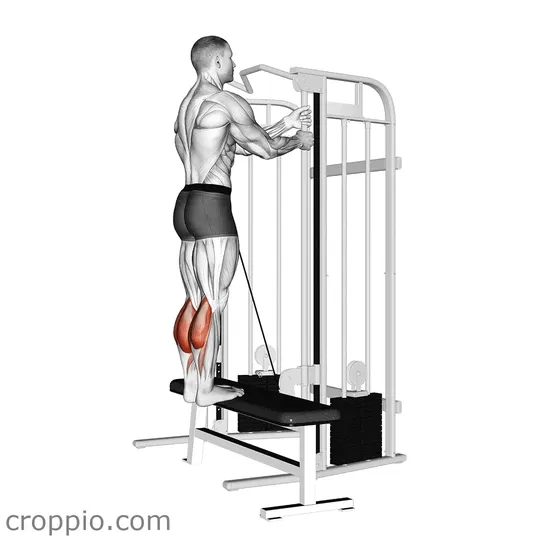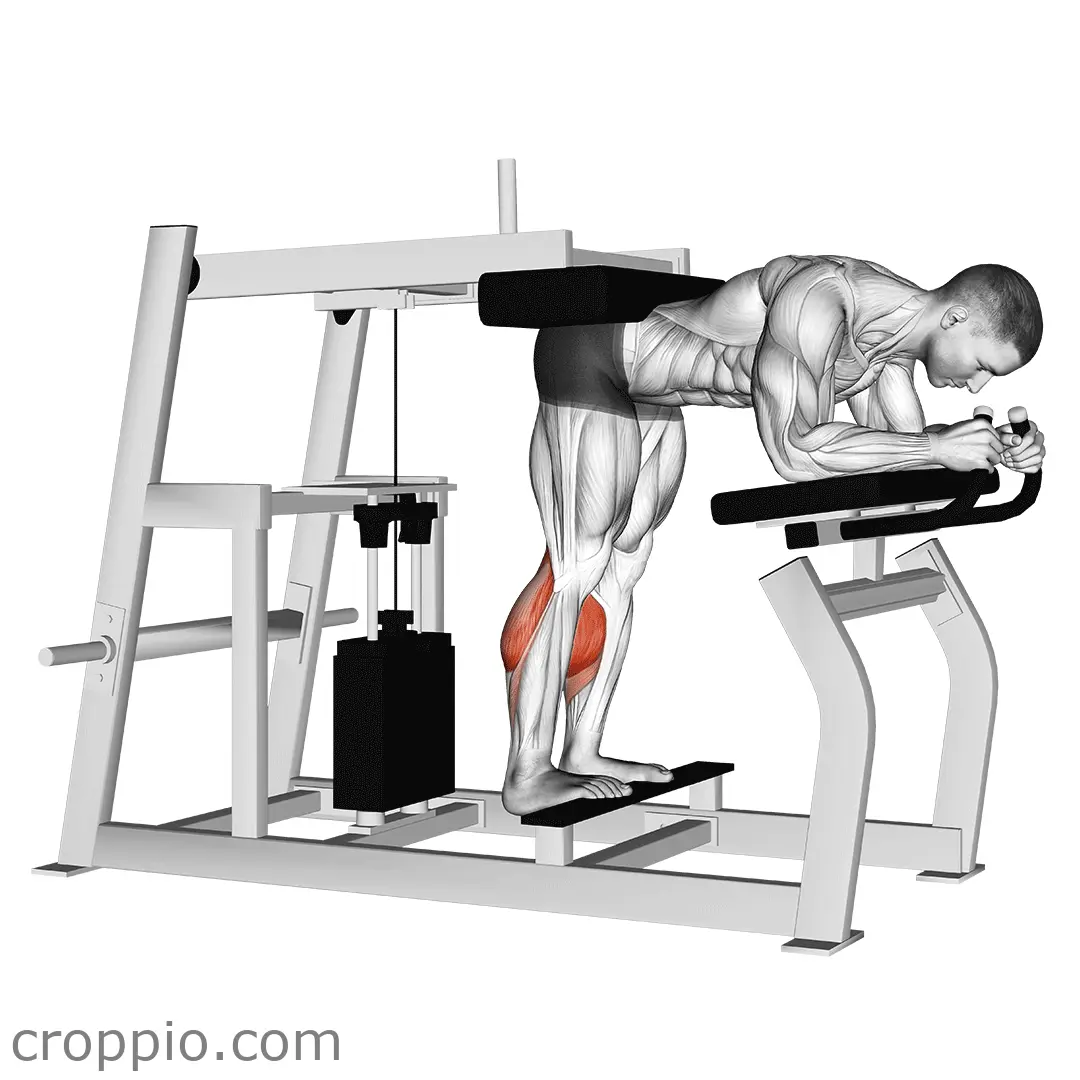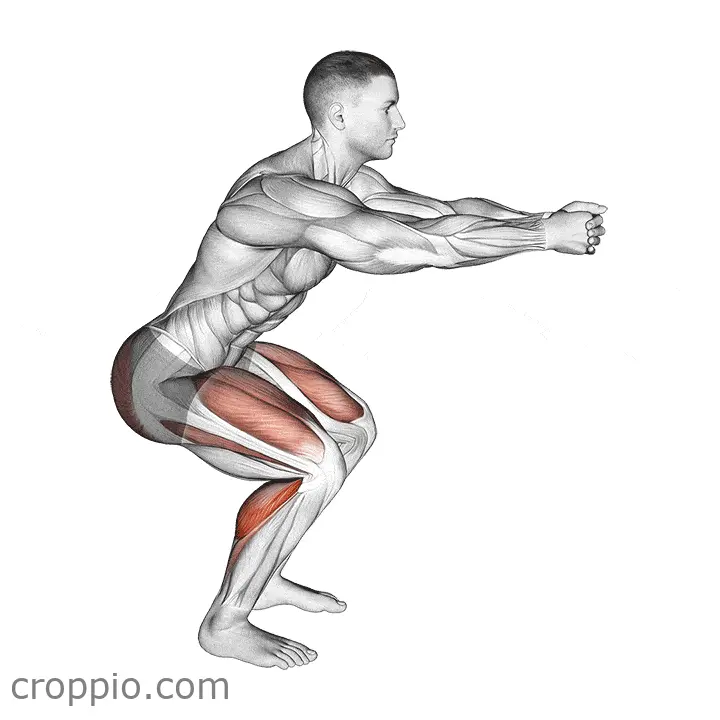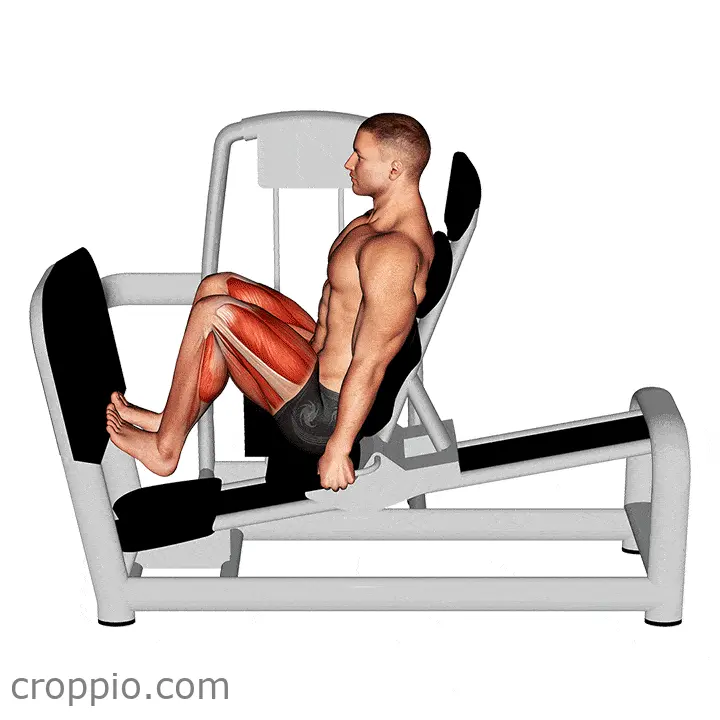Cable Standing Calf Raise

Muscles Involved
The cable standing calf raise primarily targets the calf muscles, specifically the gastrocnemius and soleus. The gastrocnemius is the larger muscle located at the back of the lower leg, and it is prominently engaged during this exercise, especially when the knee is straight. The soleus, positioned beneath the gastrocnemius, is activated significantly when the knee is bent. Additionally, the exercise involves stabilizing muscles, including the core and lower back, which help maintain posture throughout the movement.
Top Mistakes
- Improper stance: Standing too wide or too narrow can lead to ineffective targeting of the calves.
- Neglecting full range of motion: Failing to fully raise or lower the heels compromises the effectiveness of the exercise.
- Using momentum: Bouncing up and down instead of performing controlled movements may reduce muscle engagement.
- Overloading the weight: Using too much weight can lead to poor form and increase the risk of injury.
Execution Tips
- Set up with the cable pulley at the lowest position and attach a footplate or ankle strap.
- Stand with your feet hip-width apart and the balls of your feet on the platform or floor, keeping your heels off the ground.
- Grip the handles or the cable with one hand for balance, and engage your core to maintain stability.
- Slowly raise your heels by pushing through the balls of your feet, lifting until you reach the top of the motion. Aim for a smooth, controlled raise.
- Hold the position for a brief pause at the top before slowly lowering your heels back to the starting position, ensuring a full stretch in the calves.
Workouts
The cable standing calf raise can be effectively incorporated into your leg routine. Aim for 3 to 4 sets of 12 to 15 repetitions, with a moderate weight that allows you to maintain proper form throughout. For added variety, consider supersets with exercises such as squats or lunges to target other leg muscles and create a comprehensive leg day workout. Additionally, integrating both slow and fast tempo variations of the calf raise can promote strength and endurance.
Conclusion
The cable standing calf raise is a highly effective exercise for building strong, well-defined calves. By properly engaging the gastrocnemius and soleus muscles, this exercise not only enhances lower leg strength but also improves overall stability and balance. Integrating this movement into your workout routine can lead to greater athletic performance and reduced risk of injury in lower body activities.



